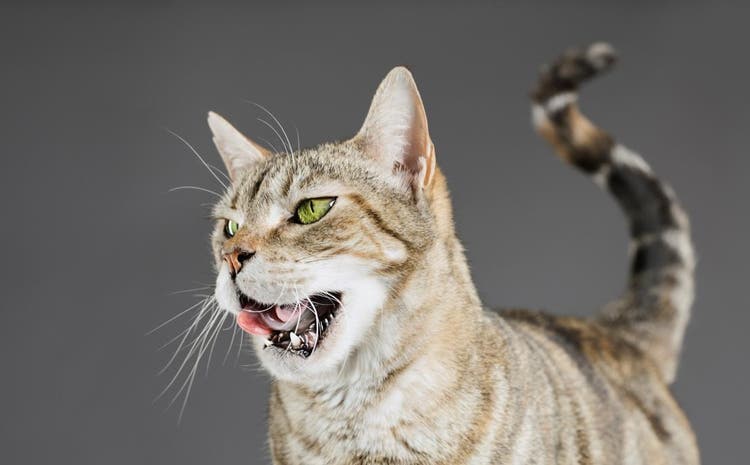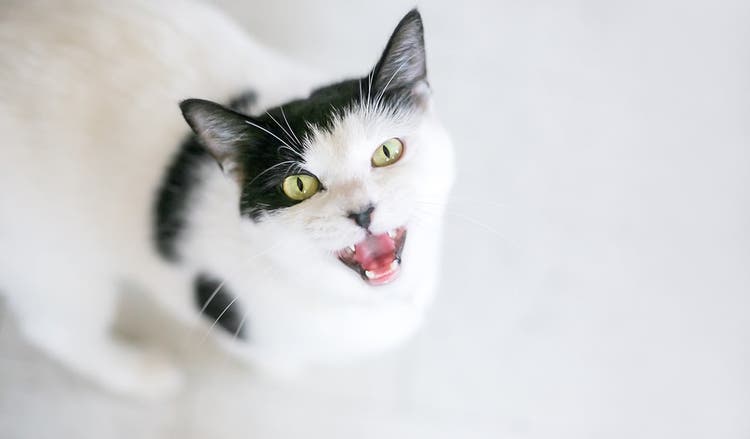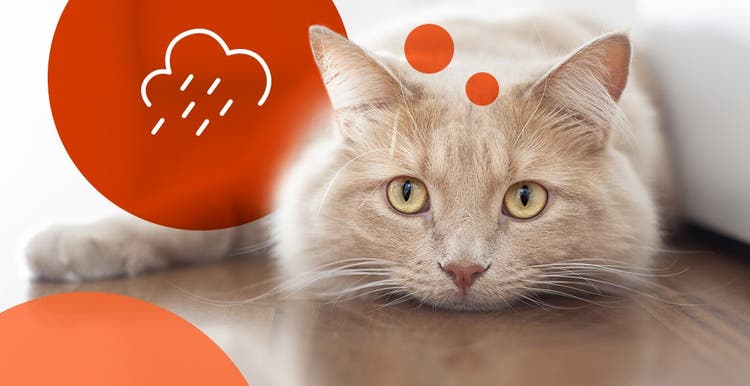Cat bites can be painful. Learn 3 reasons they happen.
Do your cat’s love bites ever lead to painful bites? Biting is a natural instinct for cats, which can make the painful behavior difficult to overcome. Learning why your cat bites can help you avoid potential biting situations.
3 Reasons Cats Bite
Even if your cat bites regularly, it can still feel random and unpredictable. Taking note of when and where your cat bites can help you connect it to a specific reason.
Your Cat’s Experience as a Kitten
Many cat behaviorists believe a kitten’s upbringing — especially how much attention the mother provided — directly correlates to how a cat uses biting as a response when they get older.
Kittens love to play, which often includes biting. When a kitten bites too hard, the mother will usually discipline them. However, if the mother is feral or busy finding food or shelter, a kitten may not learn how to curb that aggression. As a result, they might bite a little harder as they grow simply because they don’t know any better.
Your Cat’s Way of Communicating
Your cat is on your lap, purring contentedly … and then, seemingly out of nowhere, they bite you. Your cat could simply be telling you they’re done with petting for now. It’s your cat’s way of saying, “Just let me be. I’m happy — don’t push it.”
During colder, drier months, static electricity can build up in your home, and petting your cat’s fur can accidentally shock them. If you can feel static electricity on your hands, your cat can feel it on their skin — and it can sting! Your cat may choose to tell you by biting.
Your Cat’s Health
Cats are excellent at hiding symptoms of discomfort. You may only know they’re in real pain when it becomes too much for them to bear. Until then, they may express discomfort in more random ways, like biting. If your cat’s biting has increased past a few isolated instances, consider going to the vet to see if there could be an underlying health issue.

How to Help Stop Your Cat from Biting You
If your cat’s biting is frequent or painful, these steps can help minimize the behavior:
Step 1: Check Yourself
Take note of what your cat is experiencing just before biting. For example, if your cat has a tendency to randomly attack and bite your leg, they may be associating your movements with play hunting.
To limit this behavior, make eye contact with your cat whenever possible and say your cat’s name as you approach. Avoid sudden movements that could trigger their “attack” mode. If you see your cat preparing to pounce, stand still and let it pass.
Don’t yell at or hit your cat if a biting incident does occur. Negative reinforcement will only make the problem worse, and could increase their aggression next time.
Step 2: Replace Bite Time with Playtime
Cats are creatures of habit, and you may notice that your cat tends to bite at the same times every day. If so, play with your cat during those times to channel this aggression positively. Whether chasing a laser dot or a string on a stick, giving your cat at least five minutes of nonstop play can help them learn better behaviors and burn energy at the same time.
Step 3: Take Action with Distractions
If you know the signs, you can usually tell when a cat is about to bite. A twitchy tail, dilated eyes, flattened ears and an almost-frozen stance while crouching close to the ground are the clearest signals. If you notice these signs, a well-timed distraction can help stop the behavior before it starts. Squeaking a toy mouse or tossing a soft toy across the room can be an irresistible distraction when your cat is in the mood to use their teeth.
Step 4: Become a Petting Expert
You may think you’ve mastered the art of petting your cat, but if they’ve ever bitten you after being pet, you may need to brush up on your technique. Some cats are more particular than others, and your petting style could lead them to show displeasure by biting. Avoid the “zones” on their body that they prefer you don’t touch, such as the tail, the belly or near their backside.
Likewise, if your cat wants to get up and leave, don’t try to prevent them. If you restrain them, your cat could start to associate petting with punishment. In addition, while you’re petting your cat, hold your cat’s favorite toy in your other hand and let them play with it (or even bite it) to associate more positive experiences with petting.
While the occasional bite is typical cat behavior, frequent biting can be problematic, not to mention painful. Noting when and why your cat tends to bite can help reduce the frquency and help get you back to enjoying time together.
References
- American Society for the Prevention of Cruelty to Animals. (n.d.). Aggression in Cats. Retrieved from https://www.aspca.org/pet-care/cat-care/common-cat-behavior-issues/aggression-cats
- Khuly, P. (n.d.). Why Does My Cat... Bite Me When I Pet Her? Retrieved from http://www.vetstreet.com/our-pet-experts/why-does-my-cat-bite-me-when-i-pet-her
- PetMD. (2020, January 21). Cat Love Bites: What Do They Mean? Retrieved from https://www.petmd.com/cat/behavior/cat-love-bites-what-do-they-mean
Related Articles

New Cat or Kitten: Our Downloadable Guide
Thinking about adding a feline to the family? There are so many emotional, social and physical benefits to owning a cat. Check out our free guide, also available to download!







